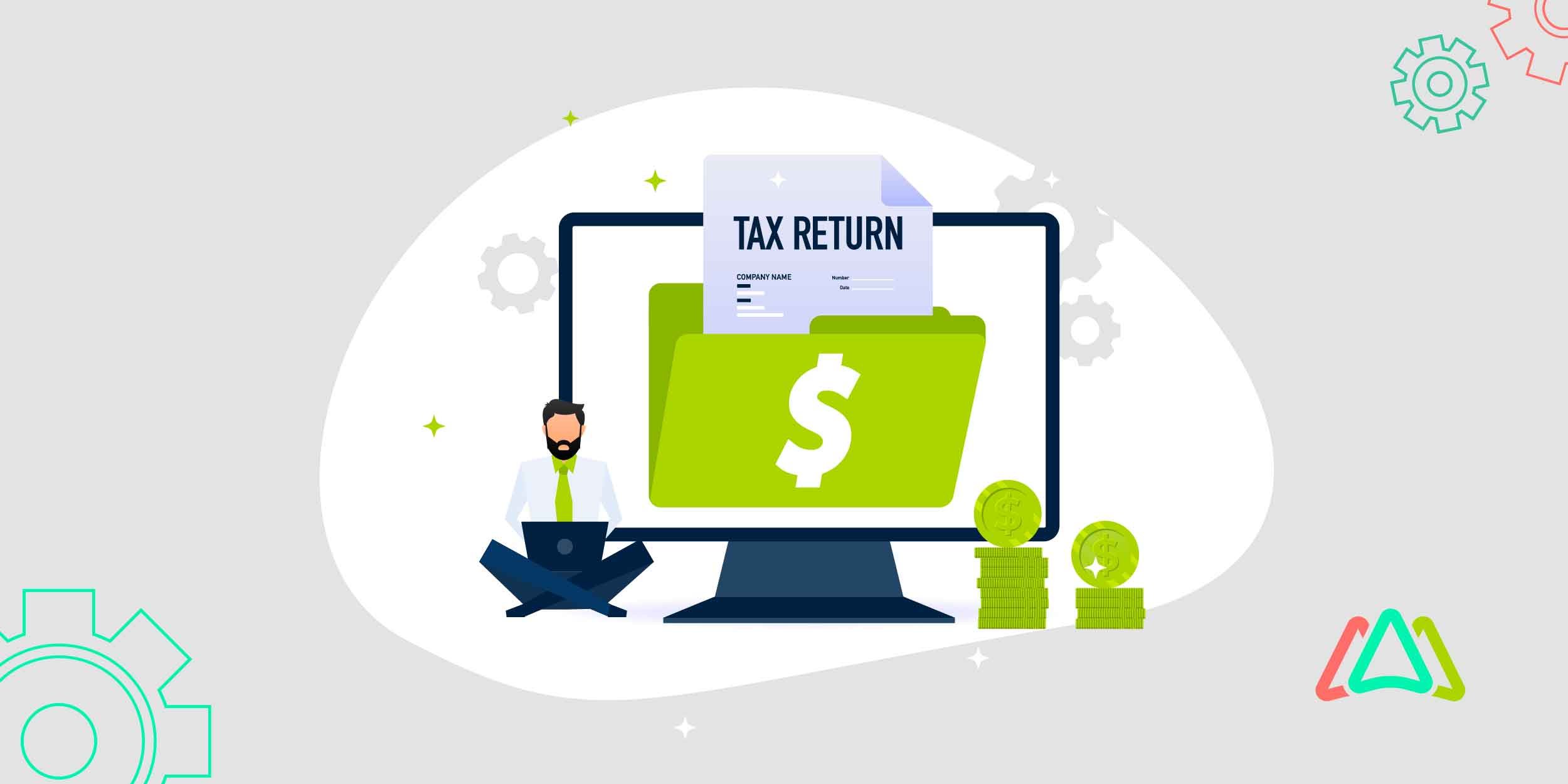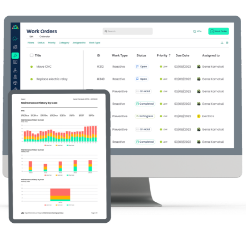
How CMMS Helps in the Tax Season?
Tax season is the time of year that often sends a ripple of anxiety through many of us. The same is true for organizations, large and small. When it comes to maintenance teams, accurately preparing for tax season is not just about submitting reports or confirming expenses; it’s about ensuring that the organization’s asset data, maintenance costs, and equipment records line up with financial reporting requirements. Interestingly, this is where a Computerized Maintenance Management System (CMMS) can play a significant supporting role far beyond its everyday capabilities of scheduling work orders or tracking downtime.
A CMMS is designed to centralize and streamline maintenance operations. However, when fully implemented, it also creates a transparent record of maintenance activities, costs, and asset history — all of which are important during tax season. The data contained in your CMMS can directly influence how your organization reports expenses, claims depreciation, or qualifies for deductions and credits. In short, a CMMS becomes a financial ally.
This article examines how a CMMS contributes to tax savings on CMMS software by enhancing data accuracy, cost tracking, and compliance readiness. You’ll see how the same platform that keeps your equipment running smoothly throughout the year can also help your business uncover hidden financial efficiencies during tax time. From precise asset documentation to audit-ready reports, a CMMS can transform tax season from a source of stress into a well-organized, cost-saving opportunity.
How CMMS Software Enables Financial Visibility and Tax-Related Recordkeeping
A longstanding advantage of a CMMS is its ability to centralize all maintenance and asset-related data in a single location. Traditionally, maintenance teams tracked work orders, spare parts, and equipment repairs through spreadsheets or handwritten logs — systems that made it challenging to link costs to specific assets or departments. A CMMS software solution changes that by automatically recording every action taken on a piece of equipment, including preventive maintenance schedules, labor hours, parts used, and associated costs. Beyond streamlining maintenance, it provides the financial transparency that organizations need when preparing for audits or filing taxes.
Accurate, accessible data enables your finance team to easily distinguish between capital expenditures and operating expenses, a crucial distinction for tax reporting. For example, a major equipment overhaul may qualify as a capital improvement and be depreciated over time, whereas a routine repair is considered an immediate expense. By tracking these activities and their costs in CMMS software, companies can be confident that their financial classifications reflect a clear and verifiable maintenance history. With a CMMS, this type of accuracy can prevent costly errors and maximize CMMS software tax savings by ensuring proper cost allocation and depreciation handling.

A CMMS also provides robust reporting capabilities that simplify the financial review process. Users can quickly generate reports showing total maintenance spend by asset, department, or time period. This is data that can be integrated directly into accounting systems. These reports are invaluable during tax preparation, especially when calculating asset value, depreciation schedules, and operational costs. There is no longer a need to scramble to find supporting documentation; teams can instantly access digital records that validate tax filings and demonstrate compliance with financial regulations.
The CMMS provides transparency that builds confidence among auditors and regulators. Maintaining a well-organized digital trail reduces the risk of disputes, missed deductions, or penalties due to incomplete records. When maintenance operations are thoroughly documented in a CMMS, organizations gain not only operational efficiency but also financial integrity. In short, the ability of a CMMS to organize, track, and report maintenance data creates measurable advantages during tax season—turning maintenance insights into tangible CMMS software tax savings.
Cost Savings, Expense Optimization, and Tax Implications
A well-implemented CMMS is a strategic financial asset. By allowing for better planning and visibility into maintenance costs, organizations can control spending, minimize waste, and extend the life of their assets. This level of operational efficiency has a direct impact on financial performance. When maintenance costs are predictable and equipment operates efficiently, businesses incur fewer expenses on emergency repairs, unplanned downtime, and excessive inventory. Those operational savings translate into stronger balance sheets. When tax season arrives, it can lead to more favorable financial outcomes. In other words, more innovative maintenance management leads to measurable tax savings from CMMS software.
Another significant benefit is that CMMS data supports accurate expense classification. Tax rules often distinguish between capital expenditures (CapEx)—improvements that extend an asset’s useful life—and operating expenses (OpEx)—routine maintenance costs. Misclassifying these can lead to missed deductions or an overpayment of taxes. A CMMS gathers detailed work history and costs, allowing organizations to clearly document which projects qualify for capitalization and which should be expensed. This form of clarity helps finance teams make tax-smart decisions while ensuring full compliance with accounting standards and IRS regulations.
Furthermore, CMMS insights can guide strategic decisions with long-term tax implications. For example, understanding the total cost of ownership for equipment can help determine when it’s more cost-effective to repair rather than replace—an essential consideration for depreciation schedules. Preventive maintenance programs powered by CMMS extend equipment lifespans, delaying capital purchases and allowing depreciation to be spread more efficiently over time. In some cases, maintenance activities that improve energy efficiency or sustainability can even make a company eligible for specific tax incentives or rebates, another layer of CMMS software tax savings.
Ultimately, a CMMS allows organizations to move from reactive financial management to proactive cost control. With accurate data, precise expense tracking, and reliable forecasting, maintenance and finance teams can collaborate more effectively to optimize budgets and uncover hidden savings. Through comprehensive documentation, businesses can maximize deductions, minimize taxable income, and enhance overall profitability—all while maintaining smooth, efficient operations year-round.
Compliance, Audit Readiness, and Risk Management
We briefly touched on compliance. Now, let’s explore this issue more deeply.
Compliance and audit readiness are often sources of stress during tax season, especially for organizations with extensive physical assets. Missing or inconsistent maintenance records can trigger red flags during audits and potentially lead to penalties or disallowed deductions. A CMMS eliminates much of that risk by maintaining a verifiable digital trail of every maintenance activity, cost, and asset detail. The software’s continuous documentation ensures that your organization can produce accurate, time-stamped records showing when maintenance was performed, what parts were used, and the associated costs. When auditors or tax professionals request proof of asset use, depreciation, or repair activity, CMMS data provides clear, defensible evidence and protects your organization from unnecessary financial exposure.
Additionally, a CMMS supports compliance with both internal policies and external regulations by standardizing the recording and storage of maintenance data. Having this form og consistency helps organizations adhere to industry-specific standards such as ISO 55000 for asset management or OSHA requirements for equipment safety. These can have indirect tax benefits through improved operational reliability and reduced risk of costly noncompliance. Moreover, when asset records are accurate and centralized, it becomes easier to ensure that only eligible expenses are claimed during tax filing. The structured reporting tools built into most CMMS platforms allow finance teams to pull precise summaries of maintenance costs, asset condition, and depreciation values. This capability further reduces the likelihood of reporting errors or misstatements.
In short, the compliance benefits of a CMMS extend well beyond maintenance operations. By ensuring transparency, accountability, and data integrity, organizations can confidently navigate tax season knowing their records meet regulatory standards. The result is smoother audits, fewer disputes, and a stronger foundation for claiming legitimate deductions. When properly utilized, these advantages contribute to measurable CMMS software tax savings while reinforcing trust and credibility with auditors, stakeholders, and governing agencies.
Practical Steps for Leveraging CMMS for Tax Season Benefits
Maximizing the value of a CMMS during tax season begins with ensuring data accuracy. The first step is to review and clean your asset register. Every asset in your CMMS should have complete and current information, including the purchase date, acquisition cost, serial number, location, expected lifespan, and maintenance history. This ensures your depreciation calculations and expense allocations are correct. A complete record also helps your finance team determine which assets are active, retired, or eligible for write-offs. Without this foundation, even the most sophisticated CMMS reports can lead to inaccurate tax filings and missed opportunities for CMMS software tax savings.
Next, review maintenance cost history within your CMMS. Ensure that all work orders, parts, and labor costs are appropriately categorized. Earmarking costs to the correct cost centers—such as capital improvements versus routine maintenance—helps finance teams apply the proper accounting treatment. For instance, if a maintenance activity significantly extends an asset's life, it might qualify as a capital expense that can be depreciated over time. Many CMMS platforms allow you to generate cost analysis reports that break down spending by asset, type of work, and department. Sharing these reports with your accounting or tax team ensures every dollar spent is accounted for correctly, supporting both accuracy and potential tax deductions.
Integrating CMMS data into your financial workflow is a sound strategic move. The benefit is that coordination between maintenance and finance departments can reveal new ways to streamline reporting and budgeting. For example, using CMMS-generated data for tax documentation helps verify depreciation schedules, justify capital investments, and provide the audit trail needed for compliance. You can also use your CMMS to identify assets or upgrades that qualify for tax credits, such as those related to energy efficiency or sustainable maintenance practices.
Ultimately, a CMMS can be an ongoing component of your tax readiness strategy, rather than just a one-time undertaking. Document every transaction throughout the year—from work orders to part replacements—so that by tax season, your data is already organized, complete, and ready to go for tax filing. Regularly reviewing CMMS reports can uncover cost trends, highlight inefficiencies, and inform budget decisions that lead to additional savings. By proactively managing your maintenance data and aligning it with your financial goals, you can prepare for tax season with a smooth, strategic process rather than a scramble.
Common Pitfalls and How to Avoid Them
Even with a robust CMMS, inevitable missteps can occur and undermine your efforts to achieve meaningful CMMS software tax savings. One common pitfall is incomplete or inaccurate data entry. If asset details, maintenance costs, or work orders aren’t logged consistently, your reports may misrepresent actual expenses or asset values—leading to missed deductions or complications during audits. To overcome this pitfall, routine data audits and clear user protocols help ensure that every entry in the CMMS is accurate and up-to-date.
Another frequent issue is failing to situate maintenance data with financial reporting needs. When maintenance teams and finance departments operate in silos, it becomes difficult to distinguish between capital improvements and operating expenses. A misalignment of this type can result in misclassified costs and lost tax opportunities. Establishing communication between departments and defining shared data categories can prevent this.
Lastly, organizations often overlook preventive maintenance in favor of reactive repairs, which drives up costs and erodes tax efficiency. A CMMS can automate preventive schedules to reduce unexpected expenses and improve long-term budgeting accuracy.
By adhering to a disciplined data entry practice, fostering collaboration between maintenance and finance, and implementing proactive maintenance strategies, companies can avoid these pitfalls and fully capitalize on CMMS software tax benefits.
The ROI of CMMS in the Context of Tax Season
The return on investment (ROI) from a CMMS extends well beyond operational efficiency—it also includes measurable financial and tax-related gains. By improving maintenance visibility, which reduces unexpected repair costs and enhances asset utilization, organizations can position themselves to create a ripple effect of savings that strengthens their bottom line. When tax season arrives, these operational efficiencies translate into concrete CMMS software tax savings through accurate expense reporting, proper asset classification, and optimized depreciation schedules.
For many companies, the financial justification for implementing or upgrading a CMMS becomes even clearer once tax benefits are considered. The system’s detailed reporting provides finance teams with the data needed to support deductions, claim tax credits, and validate depreciation—critical issues that also minimize audit risks. In essence, every dollar spent on a CMMS contributes not only to better maintenance performance but also to improved tax outcomes.
When viewed through this dual lens of operational and fiscal efficiency, the ROI of CMMS investment becomes apparent. Organizations that leverage their CMMS strategically see stronger financial control, greater confidence in compliance, and long-term savings that compound year after year—making CMMS software tax savings a key part of their overall business success strategy.
Conclusion
Tax season doesn’t have to be a time of stress and uncertainty. On the contrary, it can be a period of strategic insight and financial advantage. A well-implemented CMMS provides clarity to maintenance spending, improves asset documentation, and streamlines data sharing between maintenance and finance teams. These capabilities can uncover opportunities for real CMMS software tax savings through accurate cost tracking, optimized depreciation, and better compliance.
By utilizing CMMS data year-round, organizations can reshape tax preparation from a reactive chore into a proactive process that enhances financial performance. The key is recognizing that beyond being a maintenance tool, a CMMS is also a financial ally that supports more intelligent decision-making and long-term savings. When you align maintenance efficiency with tax strategy, you’re positioning your organization to be more resilient and financially intelligent during tax season each year.
TABLE OF CONTENTS
Keep Reading
Selecting a Computerized Maintenance Management System (CMMS) can, at first glance, be an ...
4 Nov 2025
In healthcare facilities, equipment uptime involves more than achieving operational ...
31 Oct 2025
Companies are subject to economic ups and downs, also known as economic volatility. Today, ...
30 Oct 2025
Maintenance challenges are a constant struggle, with unplanned downtime costing manufacturers ...
27 Oct 2025
Last winter, a maintenance technician at a U.S. paper mill ignored a predictive alert that ...
10 Oct 2025
Many organizations proudly say they “have a CMMS,” but ownership alone doesn’t equal ...
9 Oct 2025
Every maintenance team is under pressure to do more with less. Unplanned downtime is often ...
7 Oct 2025
The implementation of simple, yet powerfully effective, checklists has repeatedly ...
3 Oct 2025
In manufacturing, every second counts. When production stops, whether due to scheduled ...
2 Oct 2025
The increasing cost of maintenance, lack of accountability, and siloed systems leave many ...
30 Sep 2025
Preventive maintenance is one of those things maintenance teams know they need to do, but it ...
26 Sep 2025
Public services are essential to daily life. The provision of safe roads, functional transit, ...
25 Sep 2025
For most manufacturing facilities, a major focus of their maintenance teams revolves around ...
24 Sep 2025
Have you ever tried explaining to the CEO why the production line has been down for hours ...
18 Sep 2025
Over the past few decades, the hotel industry has undergone a dramatic transformation. ...
16 Sep 2025
Profitability is at the top of the list for manufacturing organizations when conversations ...
12 Sep 2025
Lean manufacturing is a goal that organizations strive for in their quest for operational ...
11 Sep 2025
In many organizations, the primary focus of maintenance work is on completing work orders, ...
9 Sep 2025
Word order backlogs are a reality that all maintenance and facilities management teams face. ...
5 Sep 2025
The critical nature of medical equipment has made maintenance management in healthcare ...
4 Sep 2025






